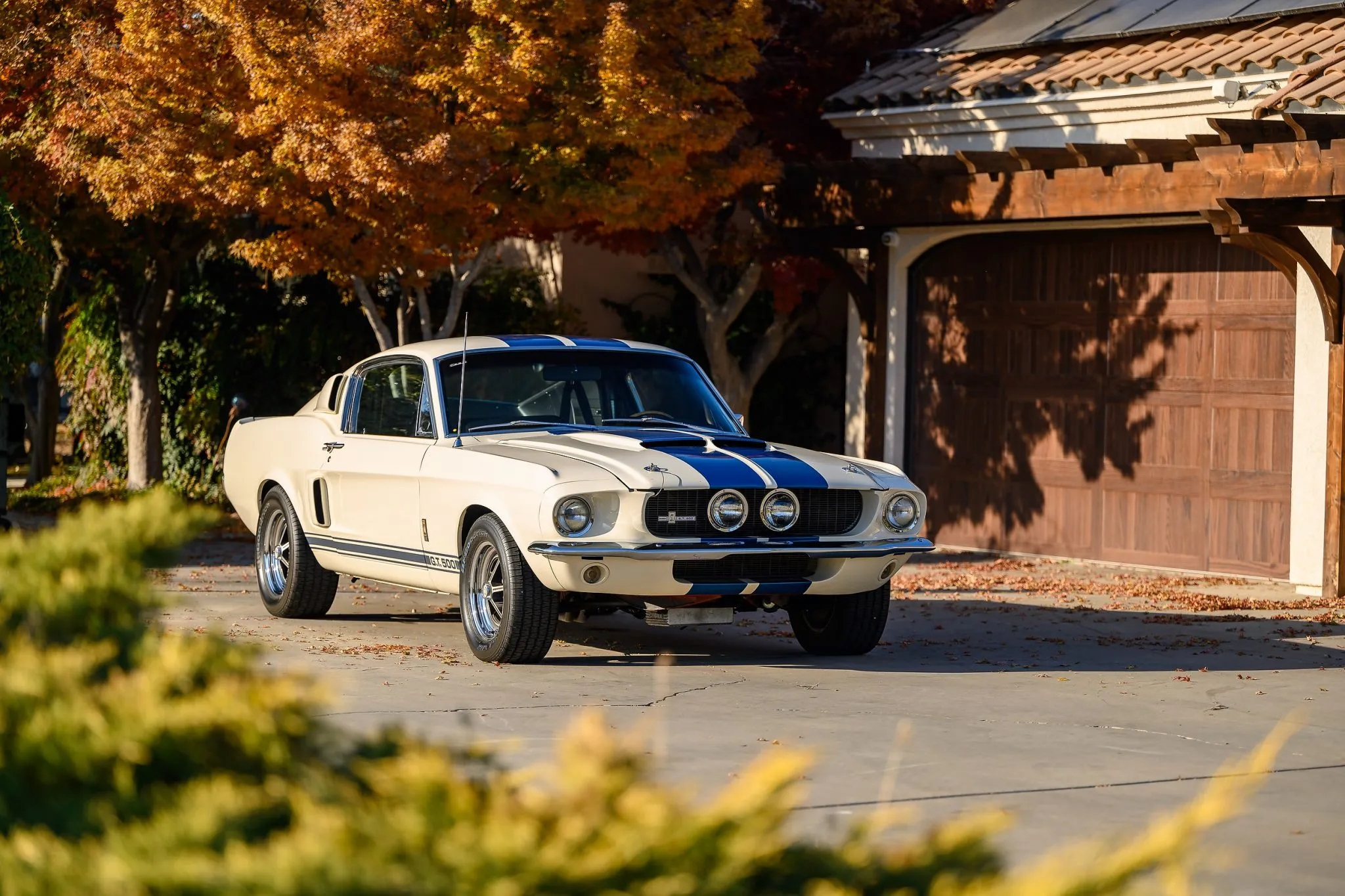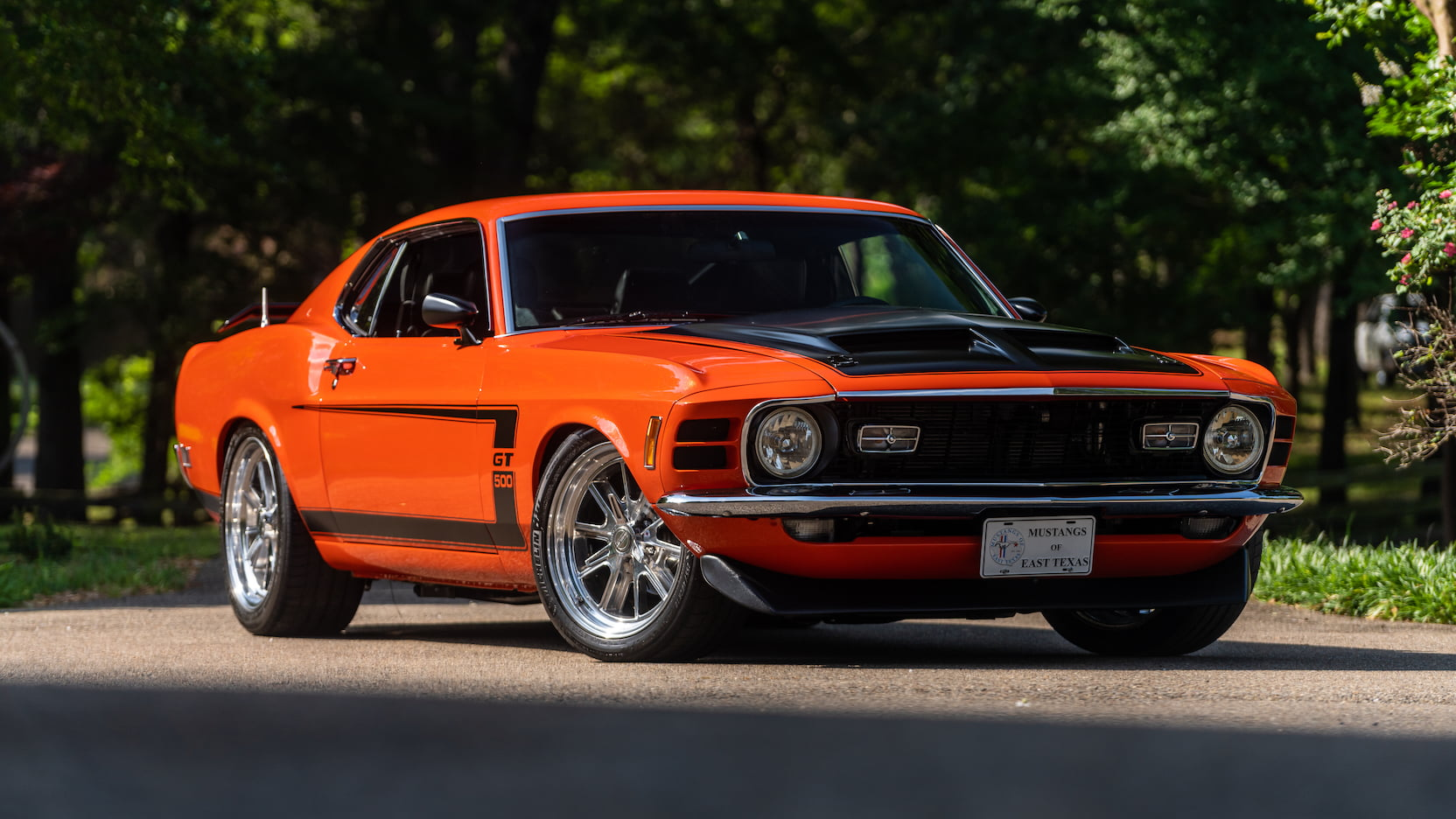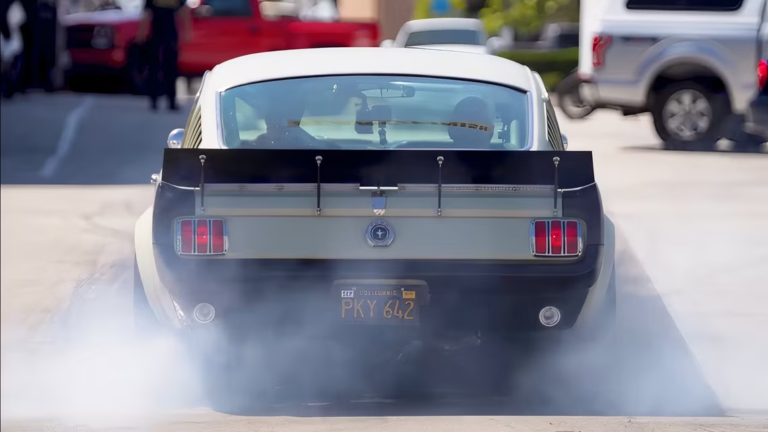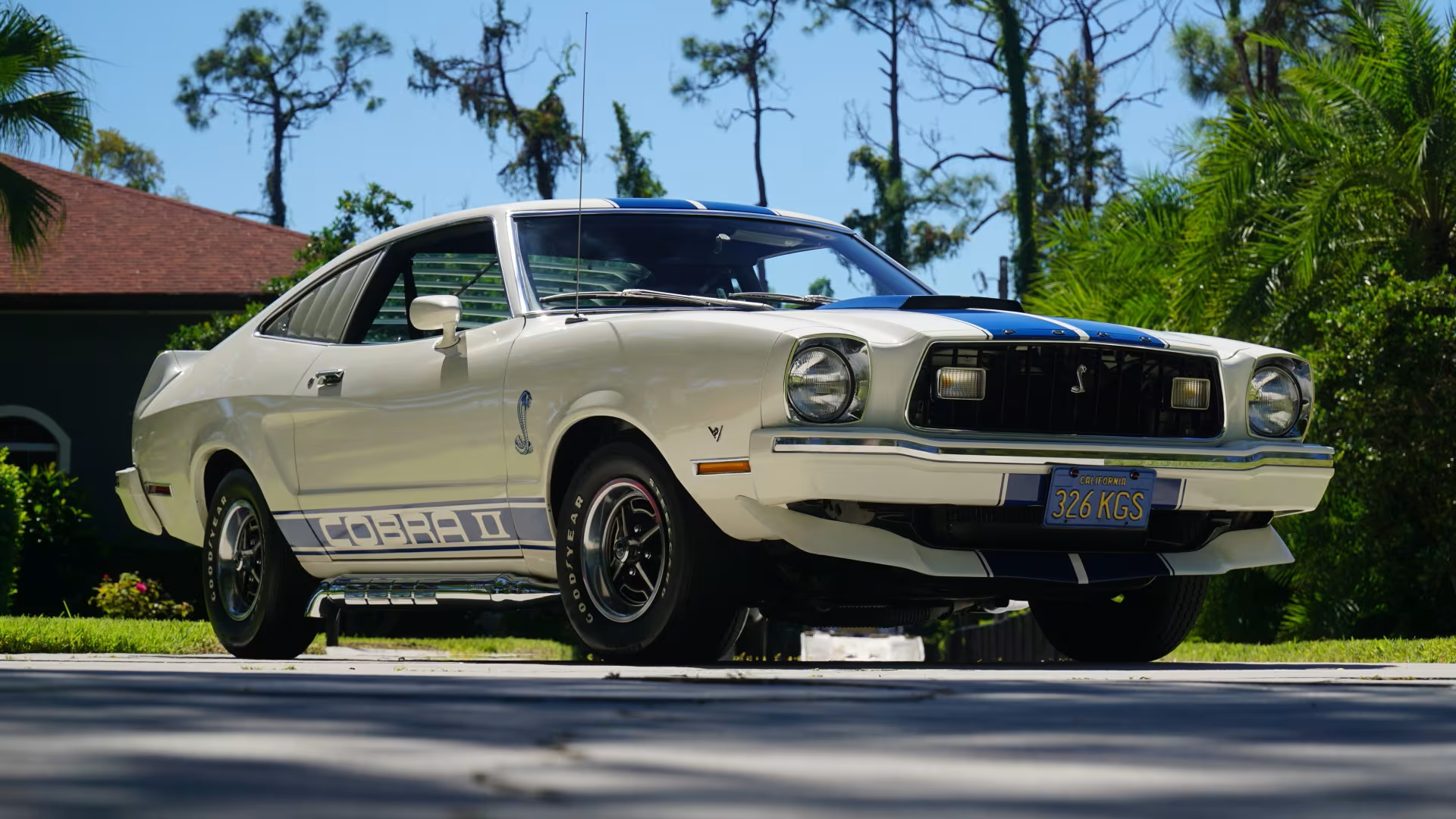History Of The Ford Mustang Shelby GT500
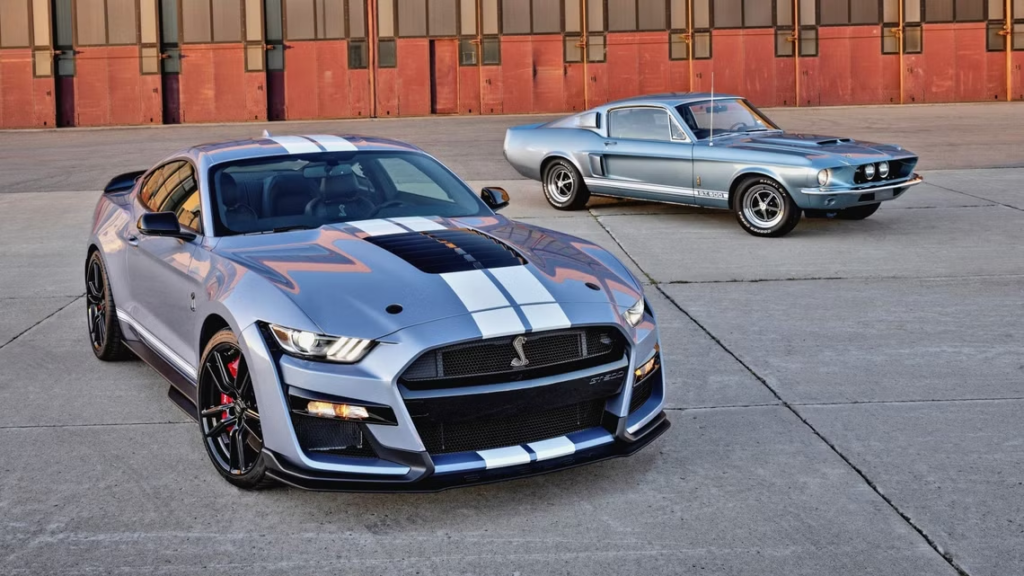
The years 1965-1973 are known as the Ford years for the legendary Carroll Shelby, who before this was a pilot in WWII. In between, he became the only individual to win the 24 Hours of Le Mans as a driver, manufacturer, and team manager, and remains the only person to do so to this day. As a driving force, depicted in the film Ford v Ferrari, he led Ford to a 1-2-3 finish in 1966 with the GT40 in that very same endurance race. Naturally, he was pegged to create the GT350 during his time with Ford, to make the Mustang a sports car while simultaneously giving it a winning performance image.
Once Ford enlarged the Mustang enough for it to carry a big block V-8, the GT500 was born, which used a 428 cubic-inch engine. Built from 1967-1970, the first GT500 eclipsed the GT350 in notoriety along with power. Later years for the car include from 2007-2014, and again from 2020-2022, while the GT350 only resurfaced again from 2016-2020. Both are special cars in individual ways, but the GT500 rightfully claims the throne as the most powerful, venomous snake in the lineup.
The OG Ford Mustang Shelby GT500

The 1967 Ford Mustang/Shelby GT500 is the classic version of the car of course. With an engine similar in displacement to the 427s that beat Ferrari in 1966, the Mustang now having seven liters meant that the GT500 engineering prototype was slower only than the GT40 around Ford’s twisty testing loop. That car could hit the quarter-mile mark in 13.6 seconds at 106 miles per hour, making it at the time, a supercar.
1967 Ford Mustang Shelby GT500 Specs
| Engine | 428 cubic-inch V-8 Cobra Le Mans |
| Horsepower | 355 @ 5400 RPM |
| Torque | 420 pound-feet @ 3200 RPM |
| Transmission | Three-speed automatic; four-speed manual |
| Curb Weight | 3,370 pounds |
| Starting MSRP | $4,195 |
With its big engine and lightweight construction, the GT500 hit zero to sixty in just 6.5 seconds, with an estimated top speed of 128 mph. Remember, we’re talking 1967 here, and the only more impressive Ford car is of course the Le Mans-winning GT40. The next year saw the previous V-8 replaced with the Cobra Jet 428, pushing horsepower towards 400. The 1968 year also saw convertibles and the GT500KR, or King of the Road, models added to the lineup.
Finally, 1969 saw restyling, and some unsold ’69 models were sold as 1970 models, with updated VINs. This effectively ended the first GT500 run. The lowest sale for an original Shelby GT500 was $10,712, but the latest sale was $139,000, with the record sale being $2,200,000! Today, expect anything within that range for a real 1967 Shelby GT500 and up, except the low range probably will never be as low as ten thousand again. Perhaps it goes without saying, but the GT500 outsold the GT350 small block sibling, the latter a car today with a record sale of $3,850,000!
The Next GT500 Goes Retro

Carroll Shelby unfortunately passed away in 2012, but not before giving his blessings and lending the use of his name to the next GT500. This rendition lived within the fifth generation of the Mustang, the S197, which ran from 2005-2014. The GT500 existed from 2007-2014, and had the retro looks that were the trend of the time, which the resurrected Dodge Challenger and Chevrolet Camaro also relatively used within the same timeframe.
Interestingly, the revived car had a live rear axle, something that changed from the previous generation Special Vehicle Team (SVT) car. For the 2003-2004 Ford Mustang SVT “Terminator” Cobra actually used an independent rear suspension. Nevertheless, this GT500 would be the last SVT dubbed car, as SVT was absorbed along with Ford Racing into the Ford Performance umbrella in 2014.
2014 Ford Mustang Shelby GT500 Specs
| Engine | 5.8 Liter Supercharged V-8 |
| Horsepower | 662 @ 6250 RPM |
| Torque | 631 pound-feet @ 4000 RPM |
| Transmission | Six-speed manual |
| Curb Weight | 3,845-3,982 pounds |
| Starting MSRP | $60,110 |
The 2007 GT500 debuted with a supercharged 5.4 liter V-8, making 475 horsepower, and 450 pound-feet of torque. By 2012 this had increased to 550 horsepower, and 510 pound-feet of torque, enough to propel the car from zero to sixty in just 4.1 seconds. However, the advent of the 2012 Camaro ZL1, a car with 580 horsepower and 556 pound-feet of torque, forced Ford’s hand. In 2013 Ford set its sights on 650 horsepower, 600 pound-feet of torque, and 200 mph benchmarks.
What was achieved was more than that, and the 2014 GT500 became a bonafide 200-plus mph car straight from factory! This is actually a faster car than even the next-gen and current GT500, and coupled with the Tremec six-speed manual only, makes the 2013-2014 GT500 the fifth-gen Mustang to get. With the retro appearance added, this car undoubtedly commands looks, and builds on a collector status.
2022 GT500: Latest & Greatest

There is no GT500 for 2023, but the latest sixth generation variant ran from 2020-2022. It marks the end of the second coming of the GT350 with it’s beginning, and it now rests due to the current generation’s end with the 2023 model year. It remains to be seen if we will see another GT350 or GT500 variant in the seventh generation, as only the 2024 Dark Horse Mustang has been revealed, the most powerful GT to date. So then the 2022 GT500 remains the mightiest Mustang ever.
2022 Ford Mustang Shelby GT500 Specs
| Engine | 5.2 Liter Supercharged V-8 |
| Horsepower | 760 @ 7300 RPM |
| Torque | 625 pound-feet @ 5000 RPM |
| Transmission | Seven-speed dual clutch automatic |
| Curb Weight | 4,171 pounds |
| Starting MSRP | $80,795 |
With a fire-breathing monster under the hood, nicknamed the “Predator” engine, the car will hit 60 mph from a stop in just 3.4 seconds. The top speed is 180 mph, per a Ford claim, again less than the previous GT500. This is the case even with the dual clutch automatic, which is the only thing a muscle car enthusiast may disdain. This is aside from the price of course, which in addition can become very expensive due to add-ons. For example, a stripe package costs $2,140-$10,000, and a Carbon Fiber Track Pack is $18,500.
Remember the old GT500KR edition? Well that has a whopping 900 horsepower this time around, and starts at $127,895. In today’s market, coupled with dealer mark-ups, good luck finding anything less. Though the GT500 has always been a muscle car, with its rear-wheel drive, big V-8, and coupe design, it’s now elevated to supercar status for sure. In fact, every GT500 can be considered so in its own time, and even today it may still be had for a fraction of the price that most deemed supercars demand.
Special And Unique GT500 Cars

The exceptional car that is the GT500 is further bolstered by extraordinary examples. The GT500KR has already been alluded to, and there’s also the GT500H, which came about through Ford’s partnership with Hertz. That’s right, one could actually rent a GT500 back in the day, and still even today! These models usually came white or black, with gold stripes. From Shelby American, in addition to the KR and H versions there’s also a GT500SE, or Signature Edition.
These can be purchased directly today, along with the latest GT500 CODE RED, a car that starts at $209,995. The GT500 CODE RED sports a carbon fiber hood and wide body package, with 1,000-plus horsepower, and 780 pound-feet of torque on 93 octane. Fill the tank with E85, and see those numbers increase to 1,300 and 1,000, respectively! If one didn’t believe the GT500 was a supercar, how is it even a question now?
There also was a Heritage Edition and Super Snake variant available, but perhaps the most recognizable and desired is “Eleanor,” from the Gone in 60 Seconds film fame. Originally a 1971 Ford Mustang in the 1974 film, the 2000 remake of the movie featured a customized Shelby GT500. The Eleanor Shelby GT500 is perhaps associated most as the classic Mustang GT500.
The only car maybe more sought after is again the Ford Shelby GT, or Ford GT, or Ford GT40 as it’s known. There were several Eleanor cars used in the remake of the film of course, a car with a 5.8 liter V-8 Ford Racing crate engine, making 400 horses. This 1967 Shelby GT500 is without a doubt in a league of its own.
This article was originally published by Topspeed

